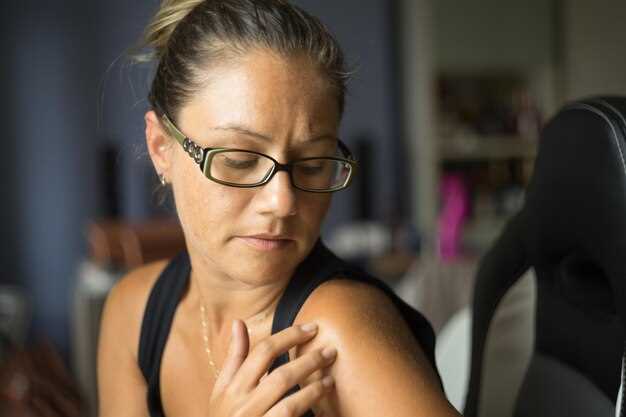Take action today: arrange a medical assessment at a university hospital to rule out serious causes, including non-hodgkins. The evaluation typically starts with a detailed history, a physical exam, and imaging, followed by a biopsy if indicated. If risk is identified, clinicians provide a version of next steps that minimizes delays and centers on evidence; in most scenarios, this early approach improves options.
What to monitor in weeks and months ahead: escalating excruciating discomfort, persistent fevers, night sweats, or unexplained weight changes warrant immediate testing. Keep a simple log each day, noting new symptoms and when they started. Three common outcomes exist: benign, treatable, or requiring further investigation. If something changes, act quickly; this sign often prompts a faster assessment.
How to handle information: strangers may share rumors; rely on official statements and peer-reviewed sources. Virtual consultations can speed access to specialists when travel is difficult. heres a simple three-step approach: collect documents, seek a second opinion, and coordinate care through a trusted medical network. This process aims to provide something actionable for involved people.
Treatment planning if a diagnosis is confirmed: a multidisciplinary team at a specialty center can discuss options such as chemotherapy, targeted therapy, or immunotherapy. In a dance-focused program environment, ask about promising trials and how virtual visits integrate into the plan. If travel is limited, schedule a local hematology consult while coordinating with the university center. This advice favors proactive communication and shared decision-making.
Practical long-term steps: maintain healthy routines within medical constraints, including balanced nutrition, moderate activity, and adequate sleep. Build a support network, and set realistic milestones in months a weeks. Keep in mind that excruciating symptoms require immediate reevaluation and possible imaging. The door to appropriate care should never close due to uncertainty. Everyone can retain a sense of free movement while staying vigilant about symptoms.
Bottom line: information should be treated with caution; depend on credible medical guidance, not guesses by strangers or unverified posts. This version of the story aims to provide actionable steps, about what to do next, and a path to advice that preserves free movement and three core priorities: safety, clarity, and dignity. thats a realistic frame for making informed decisions in the weeks ahead.
May 2018: Overview of the cancer announcement, key facts, and impact on fans
Verify official releases and testing results from the institute before sharing any interpretation, and rely on the original documents. thats why transparency matters. That approach keeps the standing of the community healthy and blocks deliberate villains from shaping the narrative.
The first notice came over months ago; recently, the institute confirms that a diagnostic process was completed after extensive testing. The patient underwent multiple procedures, including imaging that touched the breast area in some cases; the department and its medical study team outlined the steps that led to the diagnosis. The idea that concealment existed was denied; the right language was used to describe the situation to other observers. Kalani and other students commented in video posts and noted that some comments mention a daughter or family member seeking clarity. Details come in as testing progresses.
The cosmopolitan audience reacted with a mix of concern and solidarity; many posted comments in video threads, feeling that the situation would improve. Using video clips, fans compare timelines and rely on credible sources. Some people might quit following coverage if credible information was scarce, while others continued to watch and share credible sources. The store rumor mill shrank as official posts arrived; the department listened to feedback from viewers and adapted messaging to maintain trust, avoiding misleading posts that misrepresent the problem.
Key takeaway: rely on verified information, avoid sensational content, and monitor ongoing testing and study results. The institute provides first-hand data that followers can use to know the status; use video releases and written notes to track progress. The idea is to keep a standing posture healthy and informed, even as months pass and signals come in from Kalani and other sources. If you see misleading content, report it and quit sharing it; instead, seek original statements and consult the right channels. This work protects the community.
What neck pain symptoms preceded the diagnosis and when did Miller seek medical care?
Seek evaluation promptly if persistent cervical-region discomfort lasts beyond two weeks, or theres a palpable lump, fever, night sweats, or weakness; this is the best way to get clarity and start appropriate treatment quickly.
- March onset and early signs: in March, there was prolonged stiffness in the cervical region with intermittent radiating sensations into the shoulder and arm, accompanied by headaches and fatigue that really pointed to something beyond a simple strain.
- Visible signals and lymph: small, movable lymph clusters were felt in the neck area, an important sign that warranted imaging; the team explained the lymph involvement and the need to proceed with tests prior to a definitive status.
- Daily-life impact and cast involvement: opening the door and moving across the floor became more challenging; the mother stayed open about concerns, and those around her worked with the person to stay engaged in season activities while seeking advice from clinicians.
- Care pathway and timing: after prior weeks of symptoms, specialists in Pittsburgh were consulted; imaging and lymph evaluation followed, and doctors explained the need to pursue this workup before confirming a diagnosis, making a clear plan to monitor progress and stay on track with treatment.
- Media context and learning: according to survivornet and источник, theres a narrative around the case that can be sensational; despite the villains in headlines, the story emphasized sticking with medical advice, learning from the experience, and focusing on those who help, including the mother and clinicians.
- Ongoing management and participation: advisors recommended continuing activities as tolerated, with a treat plan that puts participation first; if gets worse, consider mobility supports and open discussions with the care team; working with updates to the plan helps those involved participate, and the team wouldnt delay care, keeping the door to new information open and updated; in some contexts, wheelchair use is discussed to maintain independence while the plan evolves.
Which cancer type was reported and what tests confirmed the diagnosis?
No verified public record names a specific cancer form in connection with these discussions. When millers in pittsburgh west grappled with rumors, the original notes went open and left room for interpretation. Recently, others weighed in, but the description stayed non-specific, and readers thought the claim unconfirmed. If you’re following updates, you’re advised to rely on official channels.
What tests would confirm? According to standard practice, confirmation requires a biopsy with histology and immunohistochemistry to identify the form. Imaging like MRI or CT helps locate involvement, and PET-CT can stage disease. Molecular profiling may refine classification and guide treatment. An oncologist would review results with the patient, being careful to move from test results to a concrete plan today, if a form is proven, something meaningful that informs therapy, and making sure the thought process is transparent.
On public platforms such as youtube, strangers often share comments; some posts called jojo and siwa as examples, while others suggested different possibilities. The free, careful route is to rely on the patient’s team and official communications, with plans documented and shared by the oncologist. If symptoms worsen or new signs appear, the patient should seek evaluation and ask for explicit confirmation before any announcements are made on social spaces or shops. If this topic surfaced in march discussions, the emphasis was on confirming facts before any public statement. This might help readers avoid misinformation today.
In summary, while the exact form remains uncertain, the standard confirmation path is tissue analysis plus imaging, done under medical supervision by the oncologist. Today’s best practice combines careful evaluation, transparently shared results, and a clear plan that prioritizes patient safety and informed decision making, with the floor open for questions once credible information emerges, and outcomes stay in the hands of the patient.
How did the diagnosis affect Dance Moms filming, schedule, and Miller’s participation?
Adding flexibility and making room for rest helps to reduce fatigue on set, keeping the program moving through updates and lymph monitoring guided by the institute. The real goal was a best balance, with the mother staying active in the process and the team gets input on treatments as they progressed. youre seeing these steps in action.
The filming schedule shifted toward shorter on-site days, more pre-taped segments, and remote input via youtube and instagram so fans stayed connected while risk factors were managed. Having these adjustments kept momentum across the series, as the team grappled with new constraints.
The participation shifted to shorter, lighter sequences with reduced travel, while a non-hodgkin lymph concern served as backdrop. The team confirms ongoing engagement via the series and social platforms, helping maintain an environment that stays steady for the group. The mother stays involved, learned from each update and adding input that enriches the broadcast.
On-camera strategy leaned toward real teamwork, with clips on youtube and instagram to reinforce momentum. The environment stayed supportive, and the staff emphasized continuity for supporters across channels, keeping the core participants active and engaged.
What treatment options were discussed and what was the reported prognosis in May 2018?
Three options were discussed: start with surgery to address the underlying issue, rely on medicine to control related symptoms and reduce toxic effects, and implement a structured rehabilitation program to move toward normal function. According to the department notes and a related video, the prognosis in May 2018 allowed for ongoing progress with lifetime follow-up and normal activity restoration, noting that the источник of information came from Michael and Samaniego, with video evidence that will be revisited.
| Option | Details | Prognosis / Impact |
|---|---|---|
| Surgery | Evaluation in the department to determine feasibility; potential operative plan with postoperative rehab, followed by imaging checks and wound monitoring. | Possible stabilization and improved movement; success hinges on healing and adherence to rehab over three to six months. |
| Medicine | Symptom-management regimen with careful monitoring for toxic effects; dose adjustments based on response and side effects; may require periodic labs and imaging. | Expected gradual relief and sustained progress; long-term plan may include intermittent re-evaluation and dose tweaks. |
| Rehabilitation | In-clinic plus home program emphasizing range of motion, posture, and gradual load progression; mirror-based exercises and simple checks to track progress; start with low intensity and escalate as tolerated. | Long-term improvement toward normal function is feasible with consistent effort; some tasks may take more time, with ongoing follow-up in the department. |
Where can fans find reliable updates and how to verify information?
According to official department statements, learn to verify updates by checking the open posts on the department site and its verified social accounts. This approach reduces times when rumors spread and helps you rely on primary information.
Cross-check claims with at least two credible sources; look for statements from hospitals, testing facilities, or the department itself. Always note the источник and avoid posts that lack a direct link to an official channel.
If a claim confirms something, it will include a direct quote or link to an official release; if there’s no clear reference, treat it as tentative. Theyre updates can move quickly, but you should wait for a formal post before sharing, especially when march or other dates are mentioned.
Avoid spreading comments or shares from strangers. If you want to discuss, participate in discussions through official channels and leave room for open, civil questions in trusted outlets.
Regional updates can differ, so check the house page and the door of the main site for new statements. This is particularly true for fans in pittsburgh and similar areas, where local posts may appear first.
Be mindful of health-related topics; if someone feels symptoms, they should seek professional testing or clinical care. Don’t treat posts as medical advice, and older readers may want extra time to verify details before taking action or making a public statement.

 Abby Lee Miller’s Severe Neck Pain Reported to Be Cancer – Health Update for Dance Moms Fans">
Abby Lee Miller’s Severe Neck Pain Reported to Be Cancer – Health Update for Dance Moms Fans">

